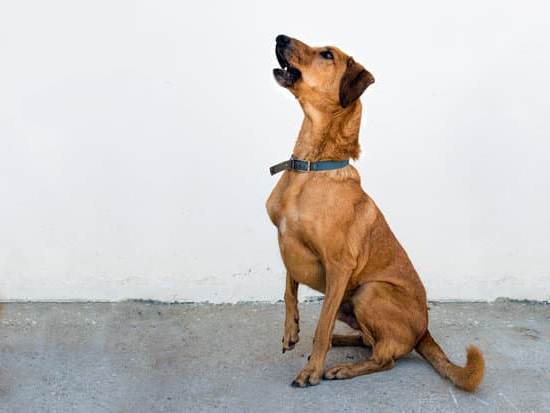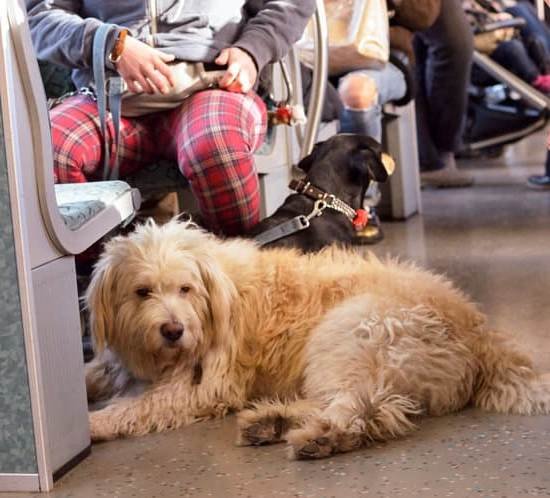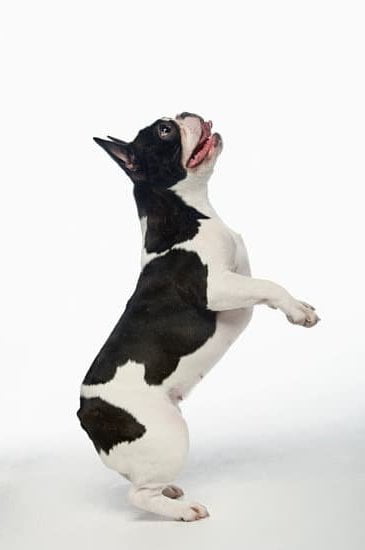Crate training an older dog can be a valuable and effective tool for both you and your canine companion. As dogs age, they may develop new behaviors or anxiety issues that can benefit from the comfort and security of a properly introduced crate. In this article, we will explore the benefits of crate training for older dogs and provide a comprehensive guide to successfully implementing this training method.
Understanding the behavior and temperament of your older dog is crucial before starting crate training. Assessing their specific needs and preferences will help you choose the right type of crate and create a positive association with it. We will walk you through the process of choosing the right crate for your older dog, considering different options and finding the best fit for their comfort and safety.
Introducing the crate to your older dog in a positive way is essential for successful crate training. We will provide a step-by-step guide on how to make the introduction stress-free and enjoyable for your pet.
Additionally, we will help you establish a consistent and effective crate training schedule to ensure that your older dog feels secure while inside the crate. Lastly, we will address common challenges that may arise during this process and provide practical solutions to overcome them.
Assessing the Needs of Your Older Dog
As you consider crate training an older dog, it is essential to assess the needs of your furry friend before starting this process. Understanding the behavior and temperament of your dog is crucial in determining whether crate training is a suitable option for them. Each dog is unique, and their individual needs should be taken into consideration before embarking on crate training.
First and foremost, it’s important to consider any previous experiences your older dog may have had with crates. If they have had negative experiences in the past, such as being confined for long periods or associating the crate with punishment, they may have a negative reaction to crate training. It’s important to slowly reintroduce them to the idea of a crate in a positive way.
Additionally, assessing your older dog’s behavior and temperament can help determine if they are suitable candidates for crate training. For example, if your dog tends to become anxious or agitated when confined, it may indicate that crate training could cause distress for them. On the other hand, if your dog seeks out small enclosed spaces or enjoys having their own “den” space, they may be more receptive to crate training.
By taking the time to understand your older dog’s specific needs and behaviors, you can make an informed decision about whether crate training is a good fit for them. This understanding will also help you tailor the crate training process to best suit your dog’s individual needs and ensure a positive experience for both you and your furry companion.
Choosing the Right Crate
When it comes to crate training an older dog, choosing the right crate is crucial in ensuring the comfort and safety of your furry friend. There are several different crate options available, each with their own benefits and drawbacks. It’s important to explore these options and find the best fit for your older dog.
Understanding Different Crate Options
There are various types of crates to choose from, including wire crates, plastic crates, and soft-sided crates. Wire crates offer good ventilation and visibility, making them a popular choice for many dog owners. Plastic crates provide a more den-like environment and can be great for dogs who prefer a cozy space. Soft-sided crates are lightweight and easy to transport, making them ideal for travel.
Finding the Best Fit for Your Older Dog
When choosing a crate for your older dog, it’s important to consider their size and behavior. The crate should be large enough for your dog to stand up, turn around, and lie down comfortably. It should also have a comfortable bed or mat inside to make it more inviting for your dog. Additionally, you’ll want to consider any special needs your older dog may have, such as arthritis or mobility issues, when selecting a crate.
Tips for Choosing the Right Crate
Before purchasing a crate, take the time to measure your older dog to ensure that you select the appropriate size. Consider your dog’s temperament and any anxiety they may experience when confined in a crate. Taking these factors into account will help you choose a crate that provides a safe and comfortable space for your older dog during crate training.
Introducing the Crate
When it comes to crate training an older dog, it’s essential to introduce the crate in a positive and gentle manner. This will help your dog develop a positive association with the crate and reduce any anxiety or fear they may have towards it.
Start by placing the crate in an area of your home where your older dog spends a lot of time. Leave the door of the crate open and allow your dog to explore it at their own pace. You can encourage them to check it out by placing treats or their favorite toys inside. This will help them associate the crate with positive experiences.
Once your older dog seems comfortable around the crate, you can start feeding them their meals near the crate. Gradually move their food bowl closer to the crate over several days until they are eating their meals inside the crate. This will help them build a positive association with being inside the crate.
As your older dog becomes more comfortable with being inside the crate, you can start closing the door for short periods while they are eating or relaxing inside. Make sure to praise and reward them for calm behavior while inside the closed crate. Gradually increase the amount of time they spend inside with the door closed as they become more accustomed to it.
| Benefits of Introducing Crate Training | Details |
|---|---|
| Reduces anxiety | Introducing the crate slowly helps reduce anxiety and fear towards it |
| Positive association | Creating positive experiences around the crate helps build a positive association |
| Bonding with owner | Spending time near or inside the crate builds trust and strengthens bond with owner |
Crate Training Schedule
When crate training an older dog, establishing a consistent and effective crate training schedule is crucial for success. A well-planned schedule can help your older dog become accustomed to their crate and feel more comfortable with it over time. Here are some essential steps to help you create a successful crate training schedule for your older dog:
1. Set specific meal times: By feeding your older dog at the same times each day, you can establish a routine that will make it easier to predict when they will need to go outside for bathroom breaks. This predictability can also help your dog feel more comfortable in their crate, as they will know when mealtime is coming.
2. Scheduled potty breaks: Just like with meal times, creating a regular schedule for bathroom breaks can help your older dog understand when it’s time to go outside. This can be particularly helpful if your dog struggles with bladder control or needs extra encouragement to eliminate waste.
3. Training and exercise sessions: Incorporating short training sessions and regular exercise into your older dog’s daily routine can provide mental and physical stimulation, which can reduce anxiety and promote relaxation when it’s time for crate training.
4. Gradual periods of alone time: As part of the crate training schedule, gradually increase the amount of time your older dog spends in their crate alone. Start with short intervals and gradually extend the duration as your dog becomes more comfortable and relaxed in their crate.
By following these steps and creating a consistent routine, you’ll be on your way to successfully crate training an older dog and helping them feel safe and secure in their new environment. Remember, patience and consistency are key when it comes to crate training an older dog.
Addressing Separation Anxiety
Separation anxiety can be a common issue for older dogs, especially when starting crate training. It’s important to address this concern with patience and understanding to help your furry friend feel comfortable and secure in their new environment.
Understanding Separation Anxiety
Separation anxiety in dogs is a condition where they experience extreme distress when separated from their owners. Symptoms can include excessive barking, destructive behavior, pacing, and even self-harm. Older dogs may be more prone to separation anxiety due to changes in routine or health issues that come with age.
Tips for Helping Your Dog Overcome Separation Anxiety
- Gradual Introduction: When starting crate training an older dog with separation anxiety, it’s crucial to introduce the crate slowly and positively. Begin by leaving the door open and placing treats or toys inside to create a positive association.
- Establish a Routine: Dogs thrive on routine, so creating a consistent schedule for crate training can help alleviate separation anxiety. This includes regular feeding times, bathroom breaks, and playtime outside of the crate.
- Calming Techniques: Using calming techniques such as soothing music or pheromone diffusers can help ease your older dog’s anxiety while in the crate. Additionally, leaving an article of clothing with your scent can provide comfort during your absence.
Overall, addressing separation anxiety during crate training an older dog requires patience, understanding, and consistency. By implementing these tips and techniques, you can help your furry companion feel secure and at ease while adjusting to their new crate routine.
Common Challenges and Solutions
Crate training an older dog can come with its own set of challenges, but with patience and the right approach, these challenges can be overcome. One common issue that may arise during crate training an older dog is resistance to being confined.
Older dogs may have a harder time adjusting to the idea of being in a crate, especially if they have never been crate trained before. This resistance can manifest as whining, barking, or even attempting to escape from the crate.
To address this challenge, it’s important to introduce the crate gradually and in a positive manner. Start by placing treats and toys inside the crate to entice your older dog to go in willingly. Once they are comfortable going in and out of the crate on their own, begin feeding them their meals inside the crate. This will create a positive association with the crate and help reduce their resistance to being confined.
Another common challenge during crate training an older dog is separation anxiety. Older dogs may be more prone to feeling anxious when left alone, especially if they have not been previously accustomed to spending time in a crate.
To help your older dog overcome separation anxiety during crate training, it’s important to gradually increase the amount of time they spend in the crate while you are away. Start with short intervals and gradually lengthen the time as your dog becomes more comfortable.
In addition, providing interactive toys or puzzle feeders can help keep your older dog mentally stimulated and alleviate feelings of anxiety while in the crate. It’s also important to avoid making a big fuss when leaving or returning home, as this can reinforce anxious behavior. With consistency and patience, most older dogs can overcome separation anxiety during crate training.
Gradual Transition
After successfully crate training your older dog, the next step is to gradually transition them from being in the crate to being left alone in the house. This is an important part of the process as it allows your dog to gain independence and feel comfortable when they are not confined to the crate. Here are some steps you can follow to ensure a smooth transition:
1. Gradual freedom: Start by leaving your dog out of the crate for short periods of time while you are still at home. This will help them get used to being out of the crate and being on their own. Use this time to observe their behavior and make sure they are not anxious or showing signs of distress.
2. Alone time: Once your dog is comfortable being out of the crate for short periods while you are at home, start leaving them alone in the house for brief periods. Start with just a few minutes and gradually increase the time as your dog becomes more accustomed to being alone.
3. Create a safe environment: Before leaving your dog alone in the house, make sure that the environment is safe and secure. Remove any hazards or items that could potentially cause harm to your dog, and provide them with toys or interactive puzzles to keep them occupied.
4. Positive reinforcement: When you return home and find that your older dog has done well on their own, always remember to praise and reward them for their good behavior. This will help reinforce positive associations with being left alone in the house.
By following these steps and allowing your older dog to gradually adjust to being left alone in the house, you can help build their confidence and independence while ensuring a smooth transition from crate training to freedom in the house.
Celebrating Success
In conclusion, crate training an older dog can be a rewarding and successful experience for both you and your canine companion. By understanding the benefits of crate training and assessing the needs of your older dog, you can create a positive environment for learning and growth.
Choosing the right crate, introducing it in a positive way, and establishing a consistent training schedule are essential steps in the process. Additionally, addressing separation anxiety and overcoming common challenges with effective solutions will help your older dog adjust to crate training.
As you progress through the crate training journey with your older dog, it’s important to celebrate the small victories along the way. Recognizing and celebrating the progress and success of your dog’s crate training efforts can reinforce positive behavior and create a strong bond between you and your pet.
Whether it’s successfully staying in the crate for an extended period, showing improvement in managing separation anxiety, or transitioning to being left alone in the house, each milestone is worth celebrating.
Remember that patience, consistency, and positive reinforcement are key components of successful crate training for older dogs. By taking a gradual approach and acknowledging the achievements of your older dog throughout the process, you can build confidence and trust while creating a safe space for them to thrive. Crate training an older dog may have its challenges, but with dedication and support, it can lead to positive outcomes for both you and your beloved pet.
Frequently Asked Questions
Can a Dog Be Too Old for Crate Training?
A dog is never too old for crate training, but it may take more time and patience with older dogs. Some older dogs may already have anxiety or negative associations with crates, so the process may require more sensitivity.
How Long Does It Take to Crate Train an Older Dog?
The time it takes to crate train an older dog varies depending on the individual dog’s temperament, previous experiences, and their overall adaptability. Some older dogs may take a few weeks to get comfortable with the crate, while others may need several months of consistent training.
How Do I Get My Older Dog to Like His Crate?
To help an older dog like his crate, it’s important to make the crate a positive and comfortable place for them. You can start by feeding the dog in the crate or placing their favorite toys and blankets inside to create a pleasant association.
Additionally, gradually increasing the time spent in the crate while providing positive reinforcement can also help them to feel more at ease.

Welcome to the blog! I am a professional dog trainer and have been working with dogs for many years. In this blog, I will be discussing various topics related to dog training, including tips, tricks, and advice. I hope you find this information helpful and informative. Thanks for reading!





